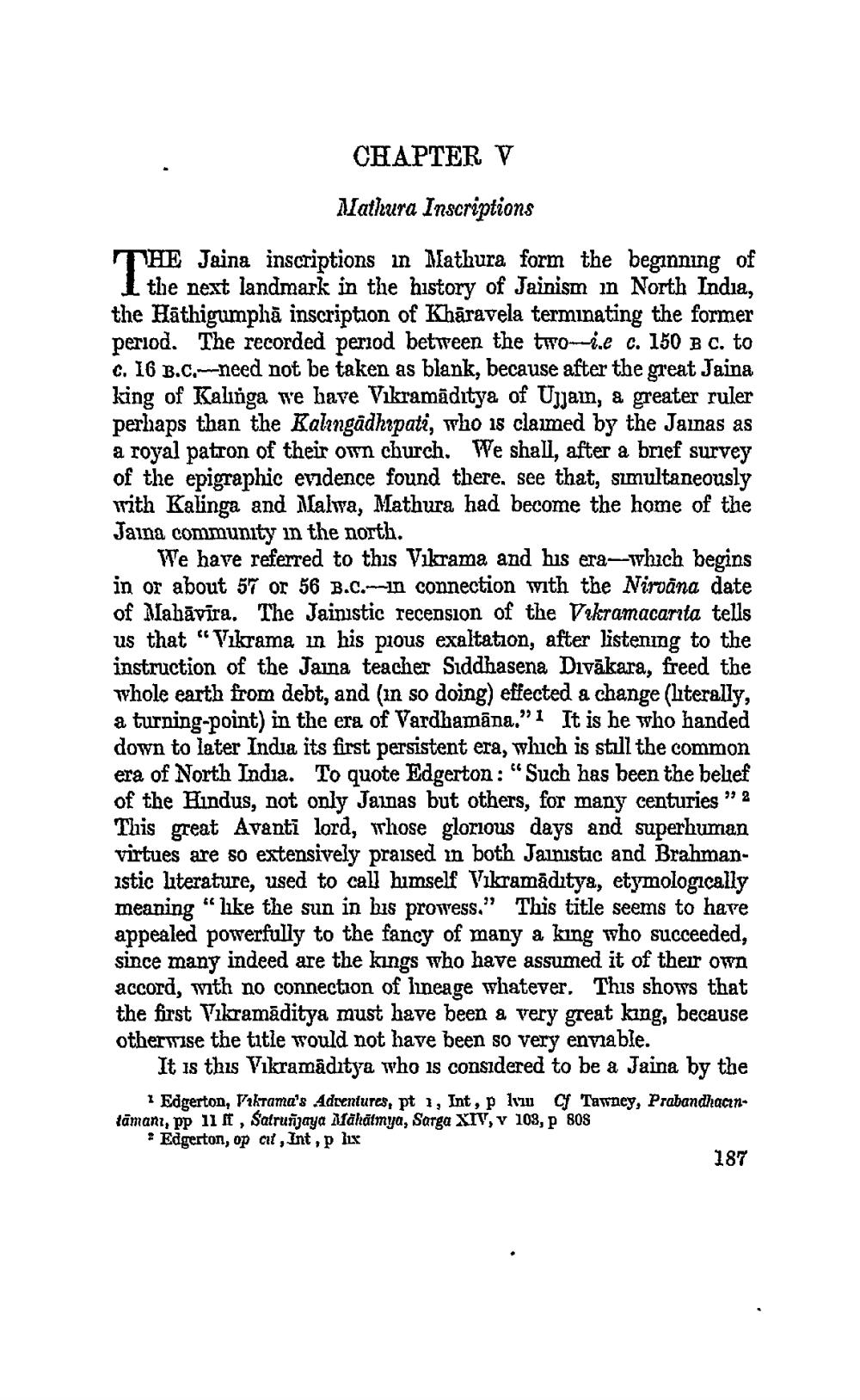________________ CHAPTER V Mathura Inscriptions THE Jaina inscriptions in Mathura form the beginning of I the next landmark in the history of Jainism in North India, the Hathigumpha inscription of Kharavela terminating the former period. The recorded period between the two-.e c. 150 BC. to c. 16 B.C.---need not be taken as blank, because after the great Jaina king of Kalinga we have Vikramaditya of Ujjam, & greater ruler perhaps than the Kalingadhrpati, who is claimed by the Jainas as a royal patron of their own church. We shall, after a brief survey of the epigraphic evidence found there, see that, simultaneously with Kalinga and Malwa, Mathura had become the home of the Jaina community in the north. We have referred to this Vikrama and his era--which begins in or about 57 or 56 B.C.-In connection with the Nirvana date of Mabavira. The Jainistic recension of the Vikramacarita tells us that "Vikrama in his pious exaltation, after listening to the instruction of the Jaina teacher Siddhasena Divakara, freed the whole earth from debt, and (in so doing) effected a change (Lterally, a turning point) in the era of Vardhamana."1 It is he who handed down to later India its first persistent era, which is still the common era of North India. To quote Edgerton : "Such has been the belief of the Hindus, not only Jainas but others, for many centuries" 2 This great Avanti lord, whose glorious days and superhuman virtues are so extensively praised in both Jainistic and Brahmanistic literature, used to call himself Vikramaditya, etymologically meaning "like the sun in bis prowess." This title seems to have appealed powerfully to the fancy of many a king who succeeded, since many indeed are the kings who have assumed it of their own accord, with no connection of lineage whatever. This shows that the first Vikramaditya must have been a very great king, because otherwise the title would not have been so very enviable. It is this Vikramaditya who is considered to be a Jaina by the Edgerton, Vikrama's Adcentures, pt 1, Int, plum cf Tawney, Prabandhaointaman, pp 11 ff, Salrunijaya Mahatmya, Sarga XIV, v 103, P 808 * Edgerton, op cit, Int. p lix 187




